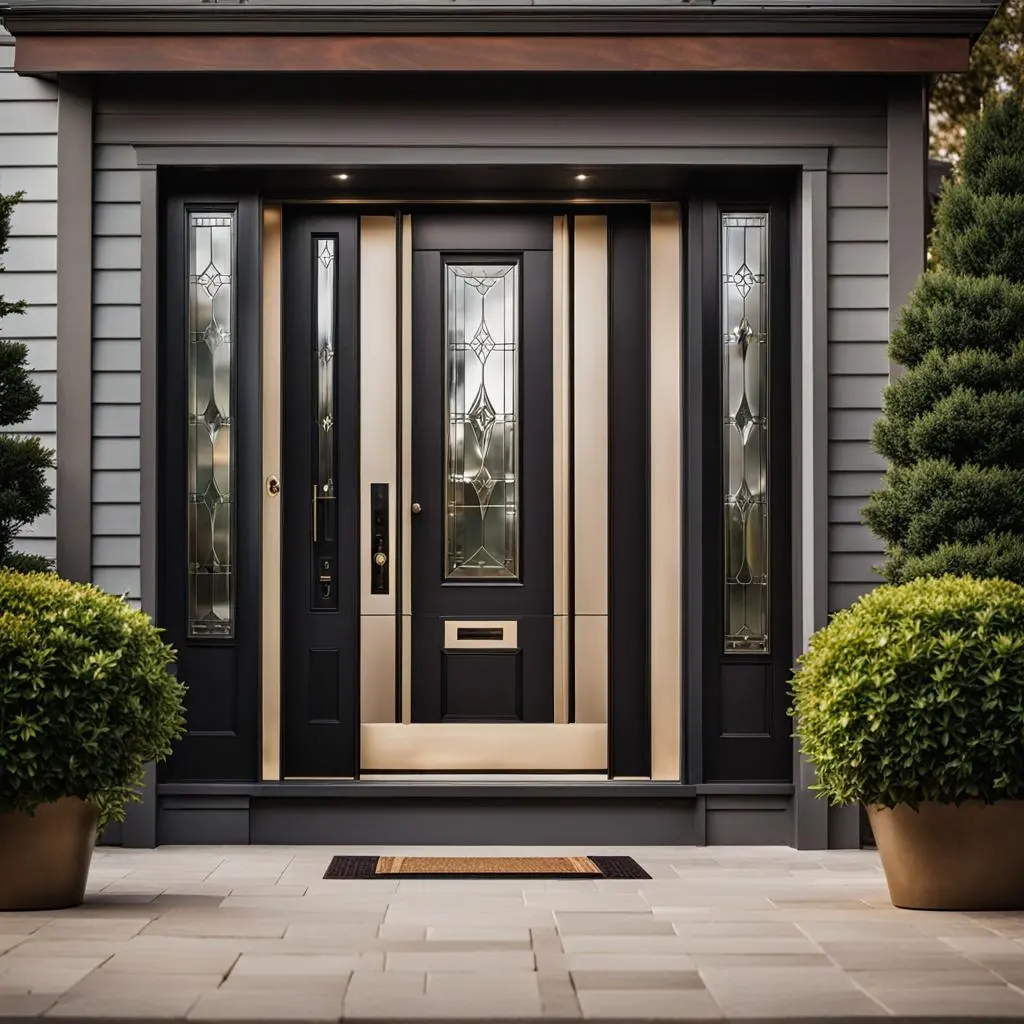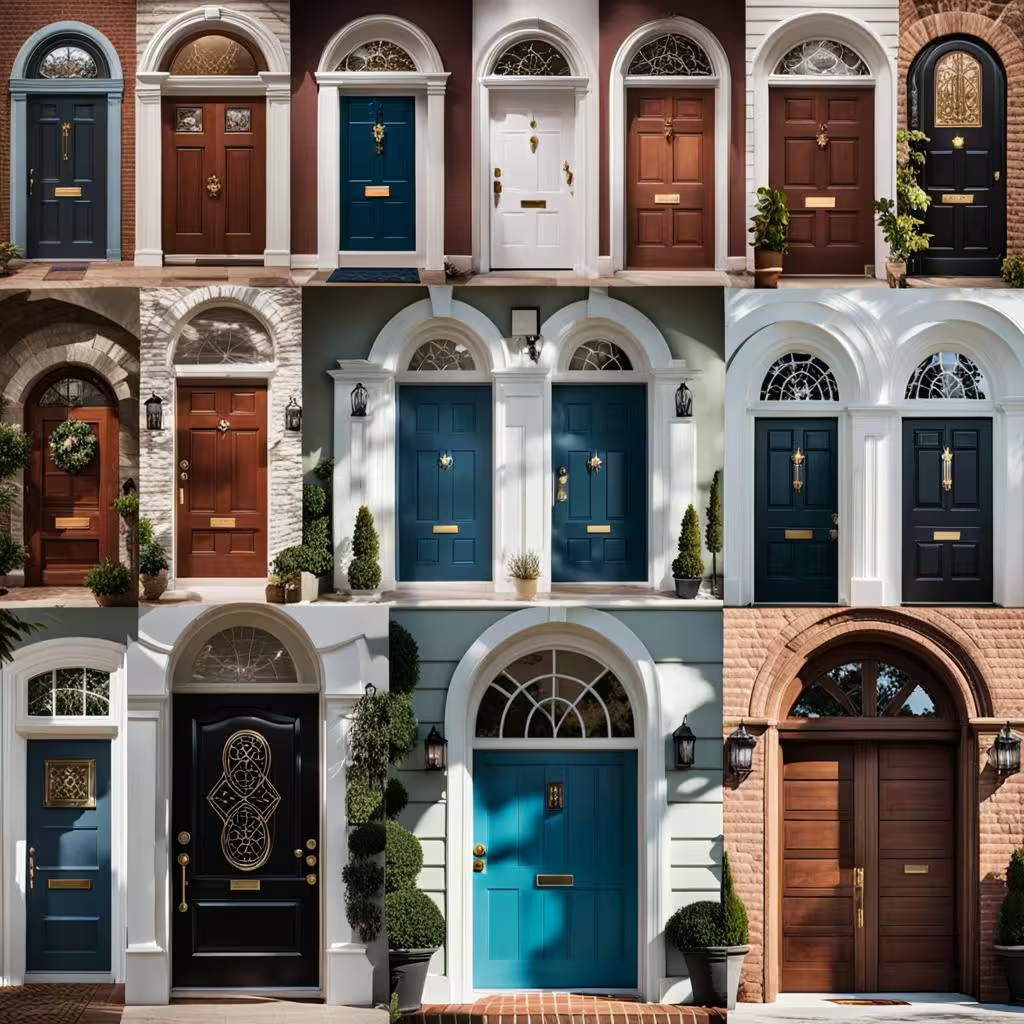Selecting the right door is more than just a practical decision – it’s about creating a space that meets our fundamental needs for security, comfort, and self-expression. A well-chosen door can enhance our sense of protection, improve our living environment, and even boost our mood. As someone who has spent years researching and testing various door types, I’m excited to share insights that will help you make an informed decision that aligns with your unique requirements and desires. In this article, we will explore this door buyer’s guide to help you choose the perfect door for your home.
Reader Disclosure
Jump to:
Understanding Door Types and Materials
When it comes to choosing a door, the sheer variety of options can be overwhelming. Let’s break down three popular door types to help you navigate your choices:
1. Solid Wood Doors
Solid wood doors are a classic choice, offering timeless elegance and natural beauty. They’re known for their durability and ability to be customized with various finishes and designs.
Pros:
- Excellent insulation properties
- Can be refinished multiple times
- Adds warmth and character to your home
Cons:
- Susceptible to warping in humid climates
- Requires regular maintenance
- Can be expensive
2. Fiberglass Doors
Fiberglass doors have gained popularity due to their low maintenance requirements and energy efficiency. They can mimic the look of wood while offering superior weather resistance.
Pros:
- Highly durable and resistant to dents
- Excellent insulation properties
- Low maintenance
Cons:
- Can fade over time if exposed to direct sunlight
- May not have the same authentic look as wood
- Limited design options compared to wood
3. Steel Doors
Steel doors are known for their strength and security. They’re an excellent choice for those prioritizing safety and energy efficiency.
Pros:
- Extremely secure and durable
- Energy-efficient
- Affordable compared to wood
Cons:
- Can dent or rust if not properly maintained
- Limited design options
- May feel cold or industrial in some settings
To help visualize the differences between these door types, let’s look at a comparison chart:
Factors to Consider When Choosing a Door
When selecting a door, it’s essential to consider various factors that will impact your satisfaction and the door’s performance over time. Here are some key considerations:
Climate and Weather Conditions
Your local climate plays a significant role in determining the best door material for your home. For instance, if you live in a humid area, you might want to avoid solid wood doors that are prone to warping. Instead, consider fiberglass or steel options that offer better resistance to moisture.
Energy Efficiency
Doors can significantly impact your home’s energy efficiency. Look for doors with good insulation properties and weatherstripping to minimize heat transfer. The U.S. Department of Energy recommends choosing doors with an ENERGY STAR label for optimal energy performance.
Security Features
Your door is your first line of defense against intruders. Consider doors with multi-point locking systems, reinforced frames, and impact-resistant glass for enhanced security. Steel doors are often the top choice for security-conscious homeowners.
Aesthetics and Curb Appeal
Your front door makes a statement about your home and personal style. Choose a door that complements your home’s architecture and enhances its curb appeal. Many homeowners find that a well-chosen door can significantly boost their property value.

Installation and Maintenance
Proper installation and maintenance are crucial for ensuring your door’s longevity and performance. Here are some key points to consider:
Professional vs. DIY Installation
While DIY installation might seem cost-effective, professional installation often provides better results, especially for exterior doors. Professionals can ensure proper fit, weatherproofing, and security features are correctly installed.
Maintenance Requirements
Different door materials have varying maintenance needs:
- Wood doors require regular staining or painting to protect against moisture and UV damage.
- Fiberglass doors need minimal maintenance, usually just cleaning and occasional touch-ups.
- Steel doors should be inspected regularly for rust and repainted as needed to prevent corrosion.
Warranty Considerations
Pay attention to warranty terms when purchasing a door. Some manufacturers offer lifetime warranties on certain door components, which can provide peace of mind and potential cost savings in the long run. Check out our Porches | Topic Page.
Cost Considerations
Door prices can vary widely based on material, style, and features. Here’s a general price range for different door types:
Remember, these are average prices and can vary based on size, design complexity, and additional features.
People Also Ask
How often should I replace my front door?
The lifespan of a front door varies, but generally, a well-maintained door can last 20-30 years. Consider replacement if you notice drafts, difficulty opening/closing, or visible damage.
Can I paint my fiberglass door?
Yes, fiberglass doors can be painted. Use a high-quality exterior paint and follow the manufacturer’s instructions for best results.
Are smart locks compatible with all door types?
Most smart locks are designed to fit standard door preparations. However, it’s best to check compatibility with your specific door type and thickness before purchasing.
Conclusion
Choosing the right door is a balance between functionality, aesthetics, and budget. By considering factors like climate, energy efficiency, security, and maintenance requirements, you can select a door that not only enhances your home’s appearance but also improves your daily life. Remember, a door is more than just an entrance – it’s a statement about your home and a crucial element in creating a space that meets your fundamental needs for security, comfort, and self-expression.
References
- https://www.energy.gov/energysaver/doors
- https://www.nar.realtor/research-and-statistics/research-reports/remodeling-impact
Show & Tell
We’d love to hear your thoughts about these ideas! Simply click the link to head over to your favorite platform and add your comments about this post there. We’d like to know about your insights, questions, or just saying hi.
Disclosure
Our content is reader-supported. This means if you click on some of our links, then we may earn a commission. Commissions do not affect our editor’s opinions or evaluations. Learn more about our editorial process.

About the Editorial Staff
The Curvspace editorial team comprises a diverse group of experts on intermediate and threshold spaces in homes and workplaces. Architects and interior designers, civil engineers and artists, environmental and behavioral psychologists, sociologists and anthropologists. All collaborate to create helpful content, that explores the full potential of these often-overlooked areas to enhance our daily lives.


